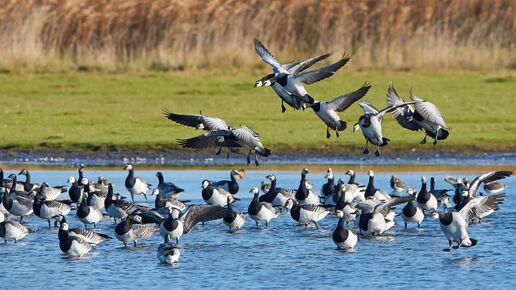Avian influenza: One Health surveillance is key to prevent virus evolving
Avian influenza ( AI The adequate intake (AI) is a dietary recommendation used when there isn't enough data to calculate an Average Requirement. An AI is the average nutrient level consumed daily by a typical healthy population which is assumed to be adequate for the population's needs.) virus continues to spread in the EU and beyond, causing high mortality in wild birds, spillover to wild and domestic mammals, and outbreaks in farms. A scientific report by the European Food Safety Authority (EFSA) and the European Centre for Disease Prevention and Control (ECDC) assesses the risk factors for a potential influenza pandemic An epidemic that becomes very widespread and affects a region, continent or the whole world. and related mitigation measures.

Drivers for viral evolution
Experts have identified certain species A subdivision of the genus, a species is a group of closely related and similar-looking organisms; for example, in the case of Homo sapiens (humans), the second part of the name (sapiens) represents the species. of farmed fur animals (e.g. mink or foxes), which are highly susceptible to influenza viruses, as possible drivers for spread. Although mammal-to-mammal transmission has not yet been confirmed, wild mammals could act as bridge hosts between wild birds, domestic animals and humans. Companion animals, such as cats, living in households and with access to the outdoors can also be a potential vehicle for transmission. Farming in areas rich in waterfowl with outdoor production and/or poor biosecurity can facilitate introduction of the virus to farms and its further spread. Extreme weather events and climate change play an additional role in the evolution of the situation because they can affect the ecology and demography of wild birds and thus influence the way the disease develops over time, experts found.
Risk reduction
Authorities from different fields should work together with a One Health perspective to limit the exposure Concentration or amount of a particular substance that is taken in by an individual, population or ecosystem in a specific frequency over a certain amount of time. of mammals, including humans, to AI viruses. Animal and human surveillance should be enhanced, together with genomic analysis and sharing of sequence data. At farms, biosecurity should be strengthened to prevent animals coming into contact with the infection and spreading it.
Next steps
By end of the year, EFSA and ECDC will publish a scientific opinion Opinions include risk assessments on general scientific issues, evaluations of an application for the authorisation of a product, substance or claim, or an evaluation of a risk assessment. assessing how a potential influenza pandemic might unfold with guidance to risk managers to reduce the risk to human health.
Links to science
How to contact us
EFSA Media Relations Office
Tel. +39 0521 036 149
E-mail: press [at] efsa.europa.eu (Press[at]efsa[dot]europa[dot]eu)
(Only if you are a member of the press)
Ask a Question Service
You have a question about EFSA’s work? Contact our Ask a Question service!